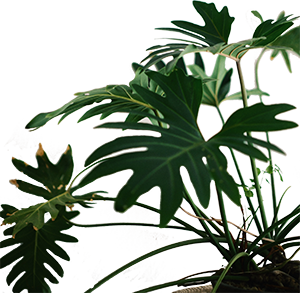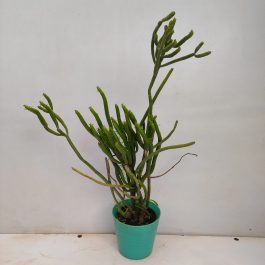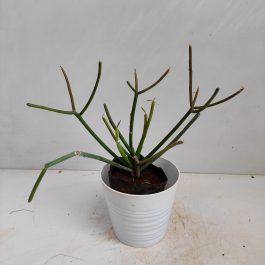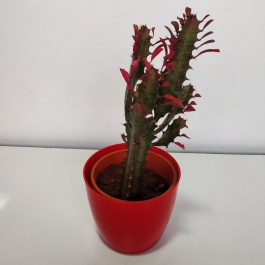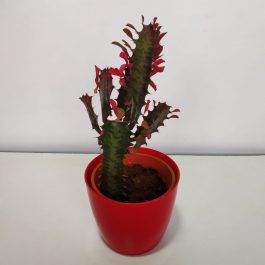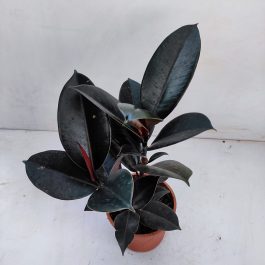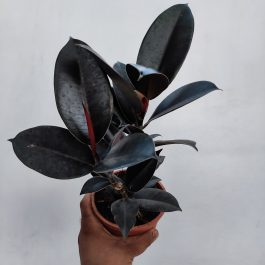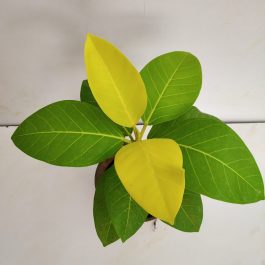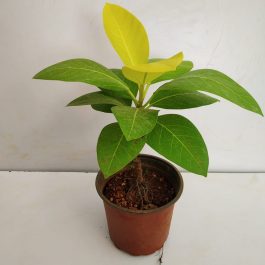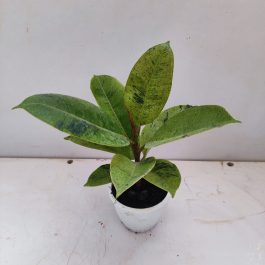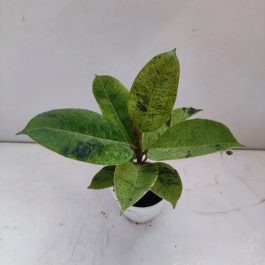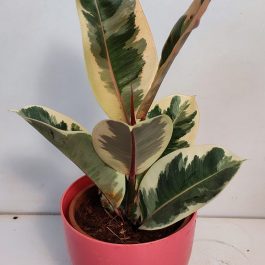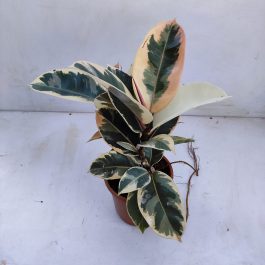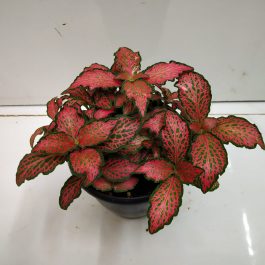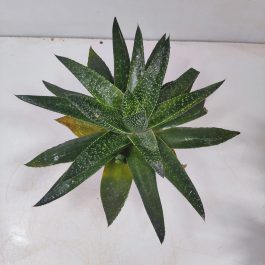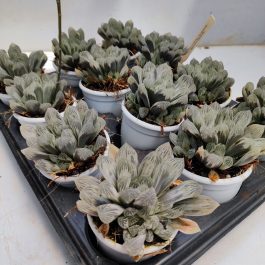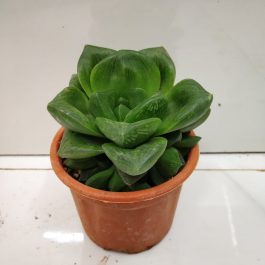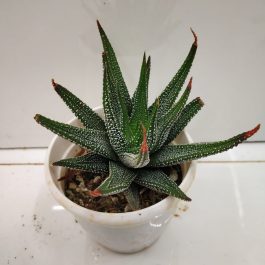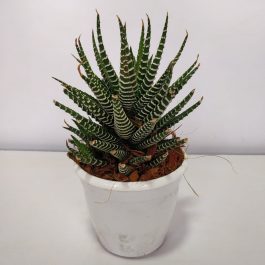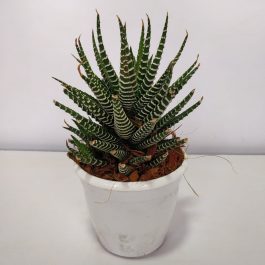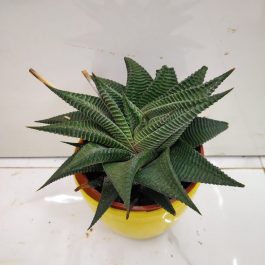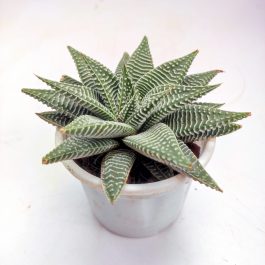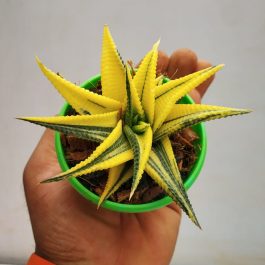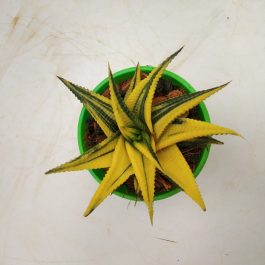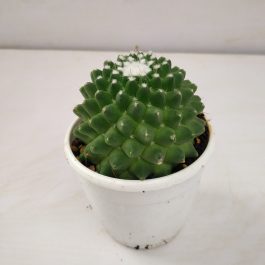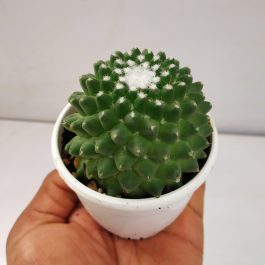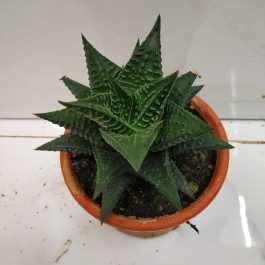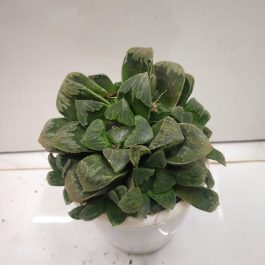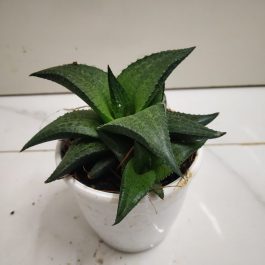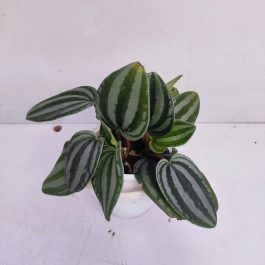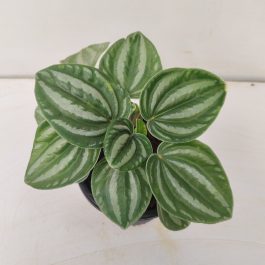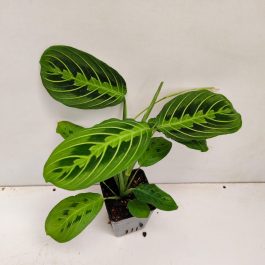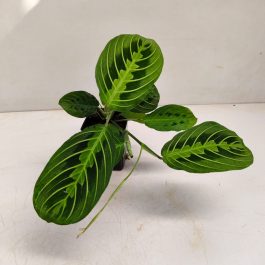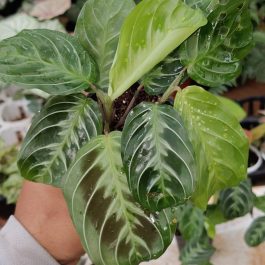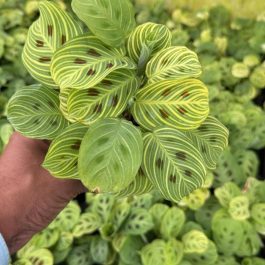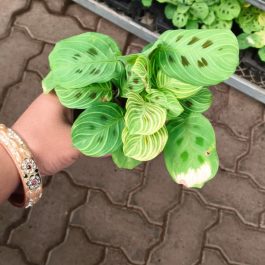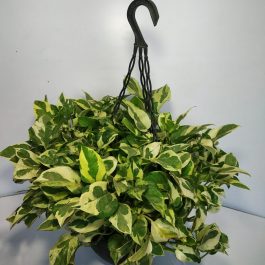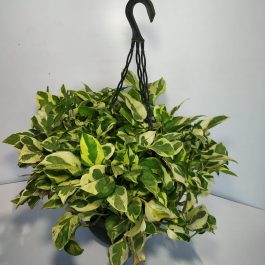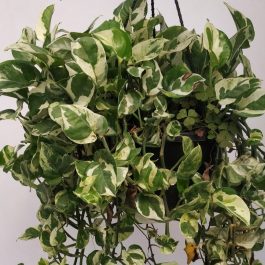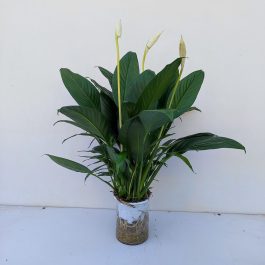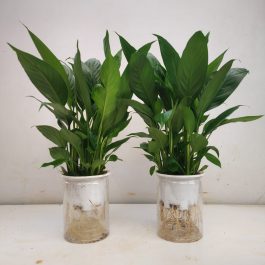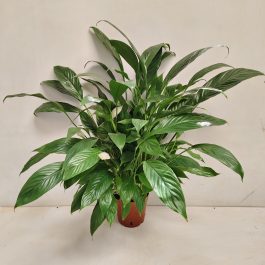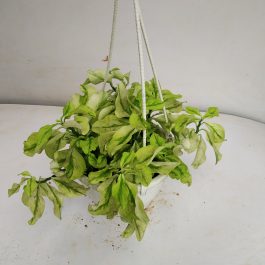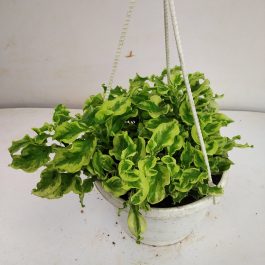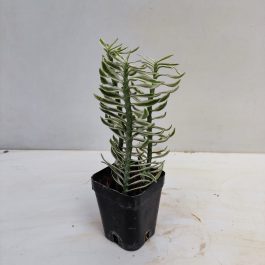Exotic Wishlist Plants
Showing 545–576 of 652 results
- Sale! -20%
![IMG_20221021_155542]()
 Add to cartMORE INFO
Add to cartMORE INFOEuphorbia tirucalli ‘Firesticks’
Euphorbia tirucalli ‘Firesticks’ is a hardy, evergreen, tough, drought-resistant, succulent shrub or small tree with rarely-seen, tiny leaves.Although normally green, the orange/red form known as Firesticks is the most popular, turning vibrant orange in winter. The plant does very well with plenty of sunlight so whether you grow it indoors or out, be sure to provide plenty of sun for it to thrive.
₹499.00₹399.00 - Sale! -43%
![b83d8038-6561-48d1-a186-b98ddb38ce17]()
 Add to cartMORE INFO
Add to cartMORE INFOEuphorbia Trigona Rubra ‘Royal Red’
Euphorbia trigona Rubra ‘Royal Red’ is a tender, evergreen, succulent succulent plant whose stems have three wing-like angles and carry short, sharp spines as well as leaves. The stems and leaves are flushed purplish-red (and some bronzish-green). The leaves are often darker red in this clone and the stems greener for a lovely bicolored look. The stems can be flecked red to magenta. Some leaves may become rich magenta-red.
₹699.00₹399.00 ![red anne]() Read more
Read moreFittonia Verschaffeltii ‘Red Anne’
Fittonia Verschaffeltii ‘Red Anne’ have small, velvety texture, green with leaves dense network of reticulated Red veins. Stems covered with fine white hairs. Fittonia albivenis (Verschaffeltii Group) ‘Red Anne’ is a plant that requires high humidity and moist, but well drained soil, with low to medium light levels to succeed, if these conditions are present, this Fittonia will thrive. Avoid harsh, direct light and dry conditions.
₹299.00₹279.00- Sale! -43%
![IMG-20220904-WA0167]()
 Add to cartMORE INFO
Add to cartMORE INFOHaworthia Cooperi Var. pilifera ‘Silver Swirl’
Haworthia Cooperi Var. pilifera ‘Silver Swirl’ is a beautiful succulent that forms tight and compact rossete upto 10 cm tall. The leaves are thick, linear that are white with grey translucent areas near the tips.
₹699.00₹399.00 ![haworthia faciata v concolor]() Add to cartMORE INFO
Add to cartMORE INFOHaworthia “Concolor Zebra Plant”
₹399.00Haworthia fasciata “Concolor Zebra Plant” is a low growing plant that grows to about 4 inches tall with small offsets. Has beautiful, green triangular shaped leaves with white stripes. Display this plant anywhere it can receive plenty of sun or bright light.
- Sale! -44%
![99e9e3f9-0afb-4fbe-ad1b-33c71d4b381b (1)]()
 Add to cartMORE INFO
Add to cartMORE INFOHaworthia fasciata – Zebra Plant
Zebra Plant (now named Haworthiopsis fasciata) Named for the distinctive white bumps that line the outside of its leaves. In nature, Its ability to tolerate low light makes it a fantastic indoor succulent. The plants are generally small, less than 6″ high. The triangular shaped leaves are dark green with narrow white crested strips on the outside. The texture of this plant will surprise you.
₹499.00₹279.00 ![haworthia limifolia]() Add to cartMORE INFO
Add to cartMORE INFOHaworthia limifolia
₹349.00Haworthia limifolia is a charming species, with large rosettes. It obtained its name “limifolia” (File Leafed) from the distinctive, dark brownish-green leaves, with transverse ridges of raised, horny, tubercles which resemble those of a coarse file and give it such a distinctive appearance.
- Sale! -44%
![IMG_20211129_122915]()
 Add to cartMORE INFO
Add to cartMORE INFOHaworthia Limifolia ‘Spider White’
Haworthia limifolia ‘Spider White’ plant, with a fantastically mesmerising white pattern. This Haworthia Limifolia is a unique succulent plant, with a rich, green base, and a unique pattern of white. This white, curving patter makes this succulent stand out, with an almost spiders web-like appearance.
₹799.00₹449.00 ![IMG-20210927-WA0097]()
 Read more
Read moreHaworthia Limifolia Variegated
Haworthia Limifolia Variegated is a charming species, with large rosettes. It obtained its name “limifolia” (File Leafed) from the distinctive, dark brownish-green leaves with yellow Variegation , with transverse ridges of raised, horny, tubercles which resemble those of a coarse file and give it such a distinctive appearance.
₹1,299.00₹649.00![IMG_20210606_084007]()
 Add to cartMORE INFO
Add to cartMORE INFOMammillaria magnimamma ‘Toluca’ (Mexican pincushion)
₹499.00It’s generally a solitary cactus, which becomes columnar with growth. It resembles a sort of green pine cone. It consists of a strong green stem, equipped with dense tubercles on which, from small and hairy areoles, thin sparse white spines, not very long and flexible, emerge, but from only some of them. At the apex it has a white down, around which, distributed in an irregular circle, small typically magenta flowers bloom.
- Sale! -21%
![haworthia limifolia fairy washboard]() Add to cartMORE INFO
Add to cartMORE INFOHaworthia ‘Fairy Washboard’
Haworthia limifolia (Fairy Washboard) is a rosette-forming succulent up to 4 inches in diameter. The leaves are triangular to ovate-lanceolate, spreading, very broad at the base, light to very dark green and even brownish-green, up to 3 inches long and up to 1 inch broad.
₹379.00₹299.00 - Sale! -13%
![haworthia retusa]() Add to cartMORE INFO
Add to cartMORE INFOHaworthia Mirabilis Mundula
Haworthia Mirabilis Mundula is a solitary stemless plant whose leaves are green with longitudinal pale green along the upper surfaces and small teeths along the margins. They turn brownish or reddish in the sun. Their leaves form a rosette and the flowers are white and small, in an inflorescence.
₹399.00₹349.00 - Sale! -16%
![e13d1a60-6fa0-4933-a03f-add85630a6b2]()
 Add to cartMORE INFO
Add to cartMORE INFOHaworthiopsis Tessellata
Haworthiopsis tessellata is a succulent evergreen slow-growing species reaching a size of 15 cm in height. It is a stemless plant, with square patterned leaves on the upper surfaces and small teeth along the margins. The leaves are greenish, form a rosette and turn to reddish in full sun. The flowers are white and small, in an inflorescence.
₹429.00₹359.00 - Sale! -60%
![IMG-20221106-WA0033]() Add to cartMORE INFO
Add to cartMORE INFOMini Watermelon Peperomia
Mini Watermelon Peperomia has narrow rounded leaves with pointed tip and are striped with shimmering silver and green bands. Also popular as Sweetheart Peperomia / Peperomia verschaffeltii is a rare slow growing exotic peperomia.
₹999.00₹399.00 ![IMG_20250712_161701]()
 Read more
Read moreSweetheart Peperomia (Peperomia verschaffeltii)
Sweetheart Peperomia is characterized by its rounded, heart-shaped leaves with silver-green veins against a dark green background. It’s a compact, slow-growing plant that’s popular for indoor spaces due to its unique foliage and relatively easy care.
₹999.00₹499.00![IMG_20220628_090857]()
 Add to cartMORE INFO
Add to cartMORE INFOEuphorbia tithymaloides (Millsp.), Devil’s Backbone (Curly leaves)
₹799.00Euphorbia tithymaloides (Millsp.), Devil’s Backbone (Curly leaves) has Greenish white to light green leaves have dark green coloration along the midvein which spreads to varying lengths into the leaf blade. Slightly folded leaf blade and strongly wavy leaf margin create a curly appearance.
- Sale! -44%
![IMG_20210617_150324]()
 Add to cartMORE INFO
Add to cartMORE INFOEuphorbia Tithymaloides ssp. Smallii ‘Curly Leaves’ in hanging pot
Euphorbia tithymaloides ssp. smallii ‘Curly leaves’ has Greenish white to light green leaves have dark green coloration along the midvein which spreads to varying lengths into the leaf blade. Slightly folded leaf blade and strongly wavy leaf margin create a curly appearance.
₹899.00₹499.00 - Sale! -56%
![IMG-20220522-WA0131]()
 Add to cartMORE INFO
Add to cartMORE INFOPedilanthus Tithymaloides ‘Nana Variegated’
Pedilanthus Tithymaloides ‘Nana Variegated’ have tiny leathery mossy green leaves tightly line the congested shiny stems in two stiff rows; outstanding, handsome houseplant with Fabulous bright white margines along each leaf.For best results provide the Devil’s Backbone variety with a fast draining cactus-like soil and full to partial sun out of doors.
₹449.00₹199.00


